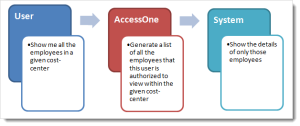 Everybody knows that data velocity, volume and variety are exploding, that business expectations of transformative results for this data are incredibly high and largely unfulfilled and that the skill sets needed to leverage this data are expensive and in short supply. It’s easy to be overwhelmed by these facts and come to the conclusion that this explosion in data is not going to deliver on its promise.
Everybody knows that data velocity, volume and variety are exploding, that business expectations of transformative results for this data are incredibly high and largely unfulfilled and that the skill sets needed to leverage this data are expensive and in short supply. It’s easy to be overwhelmed by these facts and come to the conclusion that this explosion in data is not going to deliver on its promise.
An alternative approach is to find the levers or multipliers that overcome these challenges and make these available to businesses everywhere. This concept is central to SAP’s strategy for predictive analytics.
Archimedes described the lever in AD 340 by saying “Give me the place to stand, and I shall move the earth.”
We do this in a number of ways:
- The discipline of advanced analytics itself is the best way to extract useful information from low information density data because it mathematically identifies the valuable attributes and their relationship to the business question.
- We use automated techniques throughout the predictive lifecycle so that the skills and expertise of data scientists and analysts are used to maximum effect.
- We seek to simplify the deployment of predictive models in applications and business processes so that predictive analytics projects generate ongoing ROI.
- We are building predictive marketplaces to enable partners and enthusiasts to share their work in a way that makes it easy to sell and consume.
Why a Predictive Marketplace?
One of the major drivers of internet growth and success has been the growth of online marketplaces that connect buyers and sellers in an environment that allows them to do business with confidence. From consumer giants such as eBay, Amazon, Uber and Airbnb to business marketplaces such as Ariba, online marketplaces are driving the connection economy.
We believe that predictive analytics can benefit from the same types of economies of scale that drive other online markets. Predictive analytics is skill intensive and use-case specific. We allow partners to build predictive extensions to solve specific use cases using their data science and industry expertise and then resell these predictive extensions to customers. We’re investing in features which enable them to protect their intellectual property so they can monetize this investment successfully.
Our focus on making predictive analytics consumable in end-user business applications and business intelligence clients will provide them with robust deployment paths to end users. Customers can then acquire these predictive extensions at a lower cost and risk than building the predictive models themselves. Their data scientists can then focus on using the predictive extensions to their maximum potential and working on other problems that deliver differentiated value to their employers rather than rebuilding the wheel.
Maximize ROI with the SAP Analytics Extension Directory
The SAP Analytics Extension Directory is one of the levers that will enable enterprises to maximize the ROI from predictive analytics and Big Data. The market is at an early stage in terms of available extensions, but we’re seeing huge interest and momentum from the partner community. We also had eight partners who presented solutions at Sapphire 2016 based on SAP BusinessObjects Predictive Analytics. (They were Dell, Delloitte, EY, Accenture, PWC, Qualex Consulting, d-wise and IBM).
Finally, HCP predictive services and OEM edition provide other levers for partners to take advantage of, enabling them to directly embed predictive analytics technology into their products.
If you’re interested in building predictive analytics extensions or using predictive analytics technology within your application or service, please contact Eric Fenollosa from our partner product management team.















